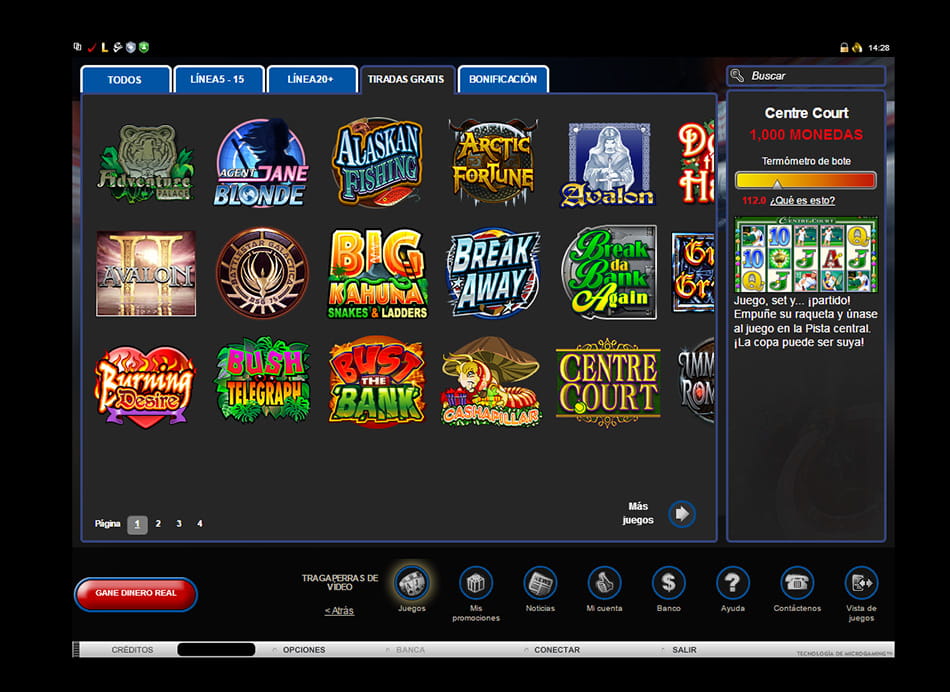casa da aposta com
|
Computer operating systems "Windows" redirects here. For the part of a building, see Window . For other uses, see Windows (disambiguation) Microsoft 🌞 Windows is a group of several proprietary graphical operating system families developed and marketed by Microsoft. Each family caters to 🌞 a certain sector of the computing industry. For instance, Windows NT for consumer and corporate desktops, Windows Server for servers, 🌞 and Windows IoT for embedded systems. Defunct Windows families include Windows 9x, Windows Mobile, Windows Phone, and Windows Embedded Compact. The 🌞 first version of Windows was released on November 20, 1985, as a graphical operating system shell for MS-DOS in response 🌞 to the growing interest in graphical user interfaces (GUIs).[12] Windows is the most popular desktop operating system in the world, with 🌞 a 70% market share as of March 2024 , according to StatCounter.[13] However, Windows is not the most used operating 🌞 system when including both mobile and desktop OSes, due to Android's massive growth.[14] As of December 2024 , the most recent 🌞 version of Windows is Windows 11 for consumer PCs and tablets, Windows 11 Enterprise for corporations, and Windows Server 2024 🌞 for servers. Genealogy By marketing role Microsoft, the developer of Windows, has registered several trademarks, each of which denotes a family of Windows 🌞 operating systems that target a specific sector of the computing industry. As of 2014, the following Windows families were being 🌞 actively developed: These Windows families are no longer being developed: Version history The term Windows collectively describes any or all of several generations 🌞 of Microsoft operating system products. These products are generally categorized as follows: Early versions The history of Windows dates back to 1981 🌞 when Microsoft started work on a program called "Interface Manager". It was announced in November 1983 (after the Apple Lisa, 🌞 but before the Macintosh) under the name "Windows", but Windows 1.0 was not released until November 1985.[17] Windows 1.0 was 🌞 to compete with Apple's operating system, but achieved little popularity. Windows 1.0 is not a complete operating system; rather, it 🌞 extends MS-DOS. The shell of Windows 1.0 is a program known as the MS-DOS Executive. Components included Calculator, Calendar, Cardfile, 🌞 Clipboard Viewer, Clock, Control Panel, Notepad, Paint, Reversi, Terminal and Write. Windows 1.0 does not allow overlapping windows. Instead, all 🌞 windows are tiled. Only modal dialog boxes may appear over other windows. Microsoft sold as included Windows Development libraries with 🌞 the C development environment, which included numerous windows samples.[18] Windows 2.0 was released in December 1987, and was more popular than 🌞 its predecessor. It features several improvements to the user interface and memory management.[19] Windows 2.03 changed the OS from tiled 🌞 windows to overlapping windows. The result of this change led to Apple Computer filing a suit against Microsoft alleging infringement 🌞 on Apple's copyrights (eventually settled in court in Microsoft's favor in 1993).[20][21] Windows 2.0 also introduced more sophisticated keyboard shortcuts 🌞 and could make use of expanded memory. Windows 2.1 was released in two different versions: Windows/286 and Windows/386. Windows/386 uses the 🌞 virtual 8086 mode of the Intel 80386 to multitask several DOS programs and the paged memory model to emulate expanded 🌞 memory using available extended memory. Windows/286, in spite of its name, runs on both Intel 8086 and Intel 80286 processors. 🌞 It runs in real mode but can make use of the high memory area.[citation needed] In addition to full Windows packages, 🌞 there were runtime-only versions that shipped with early Windows software from third parties and made it possible to run their 🌞 Windows software on MS-DOS and without the full Windows feature set. The early versions of Windows are often thought of as 🌞 graphical shells, mostly because they ran on top of MS-DOS and used it for file system services.[22] However, even the 🌞 earliest Windows versions already assumed many typical operating system functions; notably, having their own executable file format and providing their 🌞 own device drivers (timer, graphics, printer, mouse, keyboard and sound). Unlike MS-DOS, Windows allowed users to execute multiple graphical applications 🌞 at the same time, through cooperative multitasking. Windows implemented an elaborate, segment-based, software virtual memory scheme, which allows it to 🌞 run applications larger than available memory: code segments and resources are swapped in and thrown away when memory became scarce; 🌞 data segments moved in memory when a given application had relinquished processor control. Windows 3.x Windows 3.0, released in 1990 Windows 3.0, released 🌞 in 1990, improved the design, mostly because of virtual memory and loadable virtual device drivers (VxDs) that allow Windows to 🌞 share arbitrary devices between multi-tasked DOS applications.[citation needed] Windows 3.0 applications can run in protected mode, which gives them access 🌞 to several megabytes of memory without the obligation to participate in the software virtual memory scheme. They run inside the 🌞 same address space, where the segmented memory provides a degree of protection. Windows 3.0 also featured improvements to the user 🌞 interface. Microsoft rewrote critical operations from C into assembly. Windows 3.0 was the first version of Windows to achieve broad 🌞 commercial success, selling 2 million copies in the first six months.[23][24] Versions before Windows 95 had to be installed from floppy 🌞 disks by end users (or in professional environments with a network installation); here Windows for Workgroups with nine 3.5-inch-disks to 🌞 be inserted sequentially. Windows 3.1, made generally available on March 1, 1992, featured a facelift. In August 1993, Windows for Workgroups, 🌞 a special version with integrated peer-to-peer networking features and a version number of 3.11, was released. It was sold along 🌞 with Windows 3.1. Support for Windows 3.1 ended on December 31, 2001.[25] Windows 3.2, released in 1994, is an updated version 🌞 of the Chinese version of Windows 3.1.[26] The update was limited to this language version, as it fixed only issues 🌞 related to the complex writing system of the Chinese language.[27] Windows 3.2 was generally sold by computer manufacturers with a 🌞 ten-disk version of MS-DOS that also had Simplified Chinese characters in basic output and some translated utilities. Windows 9x The next major 🌞 consumer-oriented release of Windows, Windows 95, was released on August 24, 1995. While still remaining MS-DOS-based, Windows 95 introduced support 🌞 for native 32-bit applications, plug and play hardware, preemptive multitasking, long file names of up to 255 characters, and provided 🌞 increased stability over its predecessors. Windows 95 also introduced a redesigned, object oriented user interface, replacing the previous Program Manager 🌞 with the Start menu, taskbar, and Windows Explorer shell. Windows 95 was a major commercial success for Microsoft; Ina Fried 🌞 of CNET remarked that "by the time Windows 95 was finally ushered off the market in 2001, it had become 🌞 a fixture on computer desktops around the world."[28] Microsoft published four OEM Service Releases (OSR) of Windows 95, each of 🌞 which was roughly equivalent to a service pack. The first OSR of Windows 95 was also the first version of 🌞 Windows to be bundled with Microsoft's web browser, Internet Explorer.[29] Mainstream support for Windows 95 ended on December 31, 2000, 🌞 and extended support for Windows 95 ended on December 31, 2001.[30] Windows 95 was followed up with the release of Windows 🌞 98 on June 25, 1998, which introduced the Windows Driver Model, support for USB composite devices, support for ACPI, hibernation, 🌞 and support for multi-monitor configurations. Windows 98 also included integration with Internet Explorer 4 through Active Desktop and other aspects 🌞 of the Windows Desktop Update (a series of enhancements to the Explorer shell which was also made available for Windows 🌞 95). In May 1999, Microsoft released Windows 98 Second Edition, an updated version of Windows 98. Windows 98 SE added 🌞 Internet Explorer 5.0 and Windows Media Player 6.2 amongst other upgrades. Mainstream support for Windows 98 ended on June 30, 🌞 2002, and extended support for Windows 98 ended on July 11, 2006.[31] On September 14, 2000, Microsoft released Windows Me (Millennium 🌞 Edition), the last DOS-based version of Windows. Windows Me incorporated visual interface enhancements from its Windows NT-based counterpart Windows 2000, 🌞 had faster boot times than previous versions (which however, required the removal of the ability to access a real mode 🌞 DOS environment, removing compatibility with some older programs),[32] expanded multimedia functionality (including Windows Media Player 7, Windows Movie Maker, and 🌞 the Windows Image Acquisition framework for retrieving Windows 🌞 NT Version history Early versions (Windows NT 3.1/3.5/3.51/4.0/2000) Windows logo, 1995 In November 1988, a new development team within Microsoft (which included former Digital 🌞 Equipment Corporation developers Dave Cutler and Mark Lucovsky) began work on a revamped version of IBM and Microsoft's OS/2 operating 🌞 system known as "NT OS/2". NT OS/2 was intended to be a secure, multi-user operating system with POSIX compatibility and 🌞 a modular, portable kernel with preemptive multitasking and support for multiple processor architectures. However, following the successful release of Windows 🌞 3.0, the NT development team decided to rework the project to use an extended 32-bit port of the Windows API 🌞 known as Win32 instead of those of OS/2. Win32 maintained a similar structure to the Windows APIs (allowing existing Windows 🌞 applications to easily be ported to the platform), but also supported the capabilities of the existing NT kernel. Following its 🌞 approval by Microsoft's staff, development continued on what was now Windows NT, the first 32-bit version of Windows. However, IBM 🌞 objected to the changes, and ultimately continued OS/2 development on its own.[34][35] Windows NT was the first Windows operating system based 🌞 on a hybrid kernel. The hybrid kernel was designed as a modified microkernel, influenced by the Mach microkernel developed by 🌞 Richard Rashid at Carnegie Mellon University, but without meeting all of the criteria of a pure microkernel. The first release of 🌞 the resulting operating system, Windows NT 3.1 (named to associate it with Windows 3.1) was released in July 1993, with 🌞 versions for desktop workstations and servers. Windows NT 3.5 was released in September 1994, focusing on performance improvements and support 🌞 for Novell's NetWare, and was followed up by Windows NT 3.51 in May 1995, which included additional improvements and support 🌞 for the PowerPC architecture. Windows NT 4.0 was released in June 1996, introducing the redesigned interface of Windows 95 to 🌞 the NT series. On February 17, 2000, Microsoft released Windows 2000, a successor to NT 4.0. The Windows NT name 🌞 was dropped at this point in order to put a greater focus on the Windows brand.[35] Windows XP The next major version 🌞 of Windows NT, Windows XP, was released to manufacturing (RTM) on August 24, 2001, and to the general public on 🌞 October 25, 2001. The introduction of Windows XP aimed to unify the consumer-oriented Windows 9x series with the architecture introduced 🌞 by Windows NT, a change which Microsoft promised would provide better performance over its DOS-based predecessors. Windows XP would also 🌞 introduce a redesigned user interface (including an updated Start menu and a "task-oriented" Windows Explorer), streamlined multimedia and networking features, 🌞 Internet Explorer 6, integration with Microsoft's .NET Passport services, a "compatibility mode" to help provide backwards compatibility with software designed 🌞 for previous versions of Windows, and Remote Assistance functionality.[36][37] At retail, Windows XP was marketed in two main editions: the "Home" 🌞 edition was targeted towards consumers, while the "Professional" edition was targeted towards business environments and power users, and included additional 🌞 security and networking features. Home and Professional were later accompanied by the "Media Center" edition (designed for home theater PCs, 🌞 with an emphasis on support for DVD playback, TV tuner cards, DVR functionality, and remote controls), and the "Tablet PC" 🌞 edition (designed for mobile devices meeting its specifications for a tablet computer, with support for stylus pen input and additional 🌞 pen-enabled applications).[38][39][40] Mainstream support for Windows XP ended on April 14, 2009. Extended support ended on April 8, 2014.[41] After Windows 🌞 2000, Microsoft also changed its release schedules for server operating systems; the server counterpart of Windows XP, Windows Server 2003, 🌞 was released in April 2003.[35] It was followed in December 2005, by Windows Server 2003 R2. Windows Vista After a lengthy development 🌞 process, Windows Vista was released on November 30, 2006, for volume licensing and January 30, 2007, for consumers. It contained 🌞 a number of new features, from a redesigned shell and user interface to significant technical changes, with a particular focus 🌞 on security features. It was available in a number of different editions, and has been subject to some criticism, such 🌞 as drop of performance, longer boot time, criticism of new UAC, and stricter license agreement. Vista's server counterpart, Windows Server 🌞 2008 was released in early 2008. Windows 7 On July 22, 2009, Windows 7 and Windows Server 2008 R2 were released to 🌞 manufacturing (RTM) and released to the public three months later on October 22, 2009. Unlike its predecessor, Windows Vista, which 🌞 introduced a large number of new features, Windows 7 was intended to be a more focused, incremental upgrade to the 🌞 Windows line, with the goal of being compatible with applications and hardware with which Windows Vista was already compatible.[42] Windows 🌞 7 has multi-touch support, a redesigned Windows shell with an updated taskbar with revealable jump lists that contain shortcuts to 🌞 files frequently used with specific applications and shortcuts to tasks within the application,[43] a home networking system called HomeGroup,[44] and 🌞 performance improvements. Windows 8 and 8.1 Windows logo (2012–2024) Windows 8, the successor to Windows 7, was released generally on October 26, 2012. 🌞 A number of significant changes were made on Windows 8, including the introduction of a user interface based around Microsoft's 🌞 Metro design language with optimizations for touch-based devices such as tablets and all-in-one PCs. These changes include the Start screen, 🌞 which uses large tiles that are more convenient for touch interactions and allow for the display of continually updated information, 🌞 and a new class of apps which are designed primarily for use on touch-based devices. The new Windows version required 🌞 a minimum resolution of 1024×768 pixels,[45] effectively making it unfit for netbooks with 800×600-pixel screens. Other changes include increased integration with 🌞 cloud services and other online platforms (such as social networks and Microsoft's own OneDrive (formerly SkyDrive) and Xbox Live services), 🌞 the Windows Store service for software distribution, and a new variant known as Windows RT for use on devices that 🌞 utilize the ARM architecture, and a new keyboard shortcut for screenshots.[46][47][48][49][50][51][52] An update to Windows 8, called Windows 8.1,[53] was 🌞 released on October 17, 2013, and includes features such as new live tile sizes, deeper OneDrive integration, and many other 🌞 revisions. Windows 8 and Windows 8.1 have been subject to some criticism, such as the removal of the Start menu. Windows 🌞 10 On September 30, 2014, Microsoft announced Windows 10 as the successor to Windows 8.1. It was released on July 29, 🌞 2024, and addresses shortcomings in the user interface first introduced with Windows 8. Changes on PC include the return of 🌞 the Start Menu, a virtual desktop system, and the ability to run Windows Store apps within windows on the desktop 🌞 rather than in full-screen mode. Windows 10 is said to be available to update from qualified Windows 7 with SP1, 🌞 Windows 8.1 and Windows Phone 8.1 devices from the Get Windows 10 Application (for Windows 7, Windows 8.1) or Windows 🌞 Update (Windows 7).[54] In February 2024, Microsoft announced the migration of its Windows source code repository from Perforce to Git. This 🌞 migration involved 3.5 million separate files in a 300-gigabyte repository.[55] By May 2024, 90 percent of its engineering team was 🌞 using Git, in about 8500 commits and 1760 Windows builds per day.[55] In June 2024, shortly before Microsoft's announcement of Windows 🌞 11, Microsoft updated their lifecycle policy pages for Windows 10, revealing that support for their last release of Windows 10 🌞 will end on October 14, 2025.[56][57] On April 27, 2024, Microsoft announced that version 22H2 would be the last of 🌞 Windows 10.[59] Windows 11 On June 24, 2024, Windows 11 was announced as the successor to Windows 10 during a livestream. The 🌞 new operating system was designed to be more user-friendly and understandable. It was released on October 5, 2024.[60][61] As of 🌞 May 2024, Windows 11 is a free upgrade to Windows 10 users who meet the system requirements.[62] Windows 365 In July 2024, 🌞 Microsoft announced it will start selling subscriptions to virtualized Windows desktops as part of a new Windows 365 service in 🌞 the following month. The new service will allow for cross-platform usage, aiming to make the operating system available for both 🌞 Apple and Android users. It is a separate service and offers several variations including Windows 365 Frontline, Windows 365 Boot, 🌞 and the Windows 365 app.[63] The subscription service will be accessible through any operating system with a web browser. The 🌞 new service is an attempt at capitalizing on the growing trend, fostered during the COVID-19 pandemic, for businesses to adopt 🌞 a hybrid remote work environment, in which "employees split their time between the office and home". As the service will 🌞 be accessible through web browsers, Microsoft will be able to bypass the need to publish the service through Google Play 🌞 or the Apple App Store.[64][65][66][67][68] Microsoft announced Windows 365 availability to business and enterprise customers on August 2, 2024.[69] Multilingual support Multilingual support 🌞 has been built into Windows since Windows 3.0. The language for both the keyboard and the interface can be changed 🌞 through the Region and Language Control Panel. Components for all supported input languages, such as Input Method Editors, are automatically 🌞 installed during Windows installation (in Windows XP and earlier, files for East Asian languages, such as Chinese, and files for 🌞 right-to-left scripts, such as Arabic, may need to be installed separately, also from the said Control Panel). Third-party IMEs may 🌞 also be installed if a user feels that the provided one is insufficient for their needs. Since Windows 2000, English 🌞 editions of Windows NT have East Asian IMEs (such as Microsoft Pinyin IME and Microsoft Japanese IME) bundled, but files 🌞 for East Asian languages may be manually installed on Control Panel. Interface languages for the operating system are free for download, 🌞 but some languages are limited to certain editions of Windows. Language Interface Packs (LIPs) are redistributable and may be downloaded 🌞 from Microsoft's Download Center and installed for any edition of Windows (XP or later) – they translate most, but not 🌞 all, of the Windows interface, and require a certain base language (the language which Windows originally shipped with). This is 🌞 used for most languages in emerging markets. Full Language Packs, which translate the complete operating system, are only available for 🌞 specific editions of Windows (Ultimate and Enterprise editions of Windows Vista and 7, and all editions of Windows 8, 8.1 🌞 and RT except Single Language). They do not require a specific base language and are commonly used for more popular 🌞 languages such as French or Chinese. These languages cannot be downloaded through the Download Center, but are available as optional 🌞 updates through the Windows Update service (except Windows 8). The interface language of installed applications is not affected by changes in 🌞 the Windows interface language. The availability of languages depends on the application developers themselves. Windows 8 and Windows Server 2012 introduce 🌞 a new Language Control Panel where both the interface and input languages can be simultaneously changed, and language packs, regardless 🌞 of type, can be downloaded from a central location. The PC Settings app in Windows 8.1 and Windows Server 2012 🌞 R2 also includes a counterpart settings page for this. Changing the interface language also changes the language of preinstalled Windows 🌞 Store apps (such as Mail, Maps and News) and certain other Microsoft-developed apps (such as Remote Desktop). The above limitations 🌞 for language packs are however still in effect, except that full language packs can be installed for any edition except 🌞 Single Language, which caters to emerging markets. Platform support Windows NT included support for several platforms before the x86-based personal computer became 🌞 dominant in the professional world. Windows NT 4.0 and its predecessors supported PowerPC, DEC Alpha and MIPS R4000 (although some 🌞 of the platforms implement 64-bit computing, the OS treated them as 32-bit). Windows 2000 dropped support for all platforms, except 🌞 the third generation x86 (known as IA-32) or newer in 32-bit mode. The client line of the Windows NT family 🌞 still runs on IA-32 but the Windows Server line ceased supporting this platform with the release of Windows Server 2008 🌞 R2. With the introduction of the Intel Itanium architecture (IA-64), Microsoft released new versions of Windows to support it. Itanium versions 🌞 of Windows XP and Windows Server 2003 were released at the same time as their mainstream x86 counterparts. Windows XP 🌞 64-Bit Edition, released in 2003, is the last Windows client operating system to support Itanium. Windows Server line continues to 🌞 support this platform until Windows Server 2012; Windows Server 2008 R2 is the last Windows operating system to support Itanium 🌞 architecture. On April 25, 2005, Microsoft released Windows XP Professional x64 Edition and Windows Server 2003 x64 Editions to support x86-64 🌞 (or simply x64), the 64-bit version of x86 architecture. Windows Vista was the first client version of Windows NT to 🌞 be released simultaneously in IA-32 and x64 editions. x64 is still supported. An edition of Windows 8 known as Windows RT 🌞 was specifically created for computers with ARM architecture, and while ARM is still used for Windows smartphones with Windows 10, 🌞 tablets with Windows RT will not be updated. Starting from Windows 10 Fall Creators Update (version 1709) and later includes 🌞 support for ARM-based PCs.[70] Windows 11 is the first version to drop support for 32-bit hardware.[62] Windows CE Windows CE (officially known as 🌞 Windows Embedded Compact), is an edition of Windows that runs on minimalistic computers, like satellite navigation systems and some mobile 🌞 phones. Windows Embedded Compact is based on its own dedicated kernel, dubbed Windows CE kernel. Microsoft licenses Windows CE to 🌞 OEMs and device makers. The OEMs and device makers can modify and create their own user interfaces and experiences, while 🌞 Windows CE provides the technical foundation to do so. Windows CE was used in the Dreamcast along with Sega's own proprietary 🌞 OS for the console. Windows CE was the core from which Windows Mobile was derived. Its successor, Windows Phone 7, 🌞 was based on components from both Windows CE 6.0 R3 and Windows CE 7.0. Windows Phone 8 however, is based 🌞 on the same NT-kernel as Windows 8. Windows Embedded Compact is not to be confused with Windows XP Embedded or Windows 🌞 NT 4.0 Embedded, modular editions of Windows based on Windows NT kernel. Xbox OS Xbox OS is an unofficial name given to 🌞 the version of Windows that runs on Xbox consoles.[71] From Xbox One onwards it is an implementation with an emphasis 🌞 on virtualization (using Hyper-V) as it is three operating systems running at once, consisting of the core operating system, a 🌞 second implemented for games and a more Windows-like environment for applications.[72] Microsoft updates Xbox One's OS every month, and these 🌞 updates can be downloaded from the Xbox Live service to the Xbox and subsequently installed, or by using offline recovery 🌞 Version control system Up to and including every version before 🌞 Windows 2000, Microsoft used an in-house version control system named Source Library Manager (SLM). Shortly after Windows 2000 was released, 🌞 Microsoft switched to a fork of Perforce named Source Depot.[78] This system was used up until 2024 once the system 🌞 could not keep up with the size of Windows.[citation needed] Microsoft had begun to integrate Git into Team Foundation Server 🌞 in 2013,[79] but Windows (and Office) continued to rely on Source Depot.[80] The Windows code was divided among 65 different 🌞 repositories with a kind of virtualization layer to produce unified view of all of the code.[citation needed] In 2024 Microsoft announced 🌞 that it would start using Git, an open source version control system created by Linus Torvalds and in May 2024 🌞 they reported that the migration into a new Git repository was complete.[81][82][55] VFSForGit Because of its large, decades-long history, however, the Windows 🌞 codebase is not especially well suited to the decentralized nature of Linux development that Git was originally created to manage.[citation 🌞 needed] Each Git repository contains a complete history of all the files,[83] which proved unworkable for Windows developers because cloning 🌞 the whole repository takes several hours.[citation needed] Microsoft has been working on a new project called the Virtual File System 🌞 for Git (VFSForGit) to address these challenges.[82] In 2024 the VFS for Git has been superseded by Scalar.[84] Timeline of releases Windows timeline: 🌞 Bar chart The Windows family tree Usage share and device sales Use of Windows 10 has exceeded Windows 7 globally since early 2024.[91] For 🌞 desktop and laptop computers, according to Net Applications and StatCounter (which track the use of operating systems in devices that 🌞 are active on the Web), Windows was the most used operating-system family in August 2024, with around 91% usage share 🌞 according to Net Applications[92] and around 76% usage share according to StatCounter.[93] Including personal computers of all kinds (e.g., desktops, laptops, 🌞 mobile devices, and game consoles), Windows OSes accounted for 32.67% of usage share in August 2024, compared to Android (highest, 🌞 at 46.03%), iOS's 13.76%, iPadOS's 2.81%, and macOS's 2.51%, according to Net Applications[94] and 30.73% of usage share in August 🌞 2024, compared to Android (highest, at 42.56%), iOS/iPadOS's 16.53%, and macOS's 6.51%, according to StatCounter.[95] Those statistics do not include servers 🌞 (including so-called cloud computing, where Microsoft is known not to be a leader, with Linux used more than Windows) as 🌞 Net Applications and StatCounter use web browsing as a proxy for all use. Security Early versions of Windows were designed at a 🌞 time where malware and networking were less common, and had few built-in security features; they did not provide access privileges 🌞 to allow a user to prevent other users from accessing their files, and they did not provide memory protection to 🌞 prevent one process from reading or writing another process's address space or to prevent a process from code or data 🌞 used by privileged-mode code. While the Windows 9x series offered the option of having profiles for multiple users with separate profiles 🌞 and home folders, it had no concept of access privileges, allowing any user to edit others' files. In addition, while 🌞 it ran separate 32-bit applications in separate address spaces, protecting an application's code and data from being read or written 🌞 by another application, it did not protect the first megabyte of memory from userland applications for compatibility reasons. This area 🌞 of memory contains code critical to the functioning of the operating system, and by writing into this area of memory 🌞 an application can crash or freeze the operating system. This was a source of instability as faulty applications could accidentally 🌞 write into this region, potentially corrupting important operating system memory, which usually resulted in some form of system error and 🌞 halt.[96] Windows NT was far more secure, implementing access privileges and full memory protection, and, while 32-bit programs meeting the DoD's 🌞 C2 security rating,[97] yet these advantages were nullified[improper synthesis?] by the fact that, prior to Windows Vista, the default user 🌞 account created during the setup process was an administrator account; the user, and any program the user launched, had full 🌞 access to the machine. Though Windows XP did offer an option of turning administrator accounts into limited accounts, the majority 🌞 of home users did not do so, partially due to the number of programs which required administrator rights to function 🌞 properly. As a result, most home users still ran as administrator all the time. These architectural flaws, combined with Windows's 🌞 very high popularity, made Windows a frequent target of computer worm and virus writers.[98][99][citation needed] Furthermore, although Windows NT and its 🌞 successors are designed for security (including on a network) and multi-user PCs, they were not initially designed with Internet security 🌞 in mind as much, since, when it was first developed in the early 1990s, Internet use was less prevalent.[100] In a 🌞 2002 strategy memo entitled "Trustworthy computing" sent to every Microsoft employee, Bill Gates declared that security should become Microsoft's highest 🌞 priority.[101][102] Windows Vista introduced a privilege elevation system called User Account Control.[103] When logging in as a standard user, a logon 🌞 session is created and a token containing only the most basic privileges is assigned. In this way, the new logon 🌞 session is incapable of making changes that would affect the entire system. When logging in as a user in the 🌞 Administrators group, two separate tokens are assigned. The first token contains all privileges typically awarded to an administrator, and the 🌞 second is a restricted token similar to what a standard user would receive. User applications, including the Windows shell, are 🌞 then started with the restricted token, resulting in a reduced privilege environment even under an Administrator account. When an application 🌞 requests higher privileges or "Run as administrator" is clicked, UAC will prompt for confirmation and, if consent is given (including 🌞 administrator credentials if the account requesting the elevation is not a member of the administrators group), start the process using 🌞 the unrestricted token.[104] Leaked documents from 2013 to 2024 codenamed Vault 7 detail the capabilities of the CIA to perform electronic 🌞 surveillance and cyber warfare,[105] such as the ability to compromise operating systems such as Windows.[106] In August 2024, computer experts reported 🌞 that the BlueKeep security vulnerability, CVE-2024-0708, that potentially affects older unpatched Windows versions via the program's Remote Desktop Protocol, allowing 🌞 for the possibility of remote code execution, may include related flaws, collectively named DejaBlue, affecting newer Windows versions (i.e., Windows 🌞 7 and all recent versions) as well.[107] In addition, experts reported a Microsoft security vulnerability, CVE- 2024-1162, based on legacy 🌞 code involving Microsoft CTF and ctfmon (ctfmon.exe), that affects all Windows versions from Windows XP to the then most recent 🌞 Windows 10 versions; a patch to correct the flaw is available.[108] Microsoft releases security patches through its Windows Update service approximately 🌞 once a month (usually the second Tuesday of the month), although critical updates are made available at shorter intervals when 🌞 necessary.[109] Versions subsequent to Windows 2000 SP3 and Windows XP implemented automatic download and installation of updates, substantially increasing the 🌞 number of users installing security updates.[110] Windows integrates the Windows Defender antivirus, which is seen as one of the best available.[111] 🌞 Windows also implements Secure Boot, Control Flow Guard, ransomware protection, BitLocker disk encryption, a firewall, and Windows SmartScreen. File permissions All Windows 🌞 versions from Windows NT 3 have been based on a file system permission system referred to as AGDLP (Accounts, Global, 🌞 Domain Local, Permissions) in which file permissions are applied to the file/folder in the form of a 'local group' which 🌞 then has other 'global groups' as members. These global groups then hold other groups or users depending on different Windows 🌞 versions used. This system varies from other vendor products such as Linux and NetWare due to the 'static' allocation of 🌞 permission being applied directly to the file or folder. However using this process of AGLP/AGDLP/AGUDLP allows a small number of 🌞 static permissions to be applied and allows for easy changes to the account groups without reapplying the file permissions on 🌞 the files and folders. Alternative implementations Owing to the operating system's popularity, a number of applications have been released that aim to 🌞 provide compatibility with Windows applications, either as a compatibility layer for another operating system, or as a standalone system that 🌞 can run software written for Windows out of the box. These include: Wine – a free and open-source implementation of the 🌞 Windows API, allowing one to run many Windows applications on x86-based platforms, including UNIX, Linux and macOS. Wine developers refer 🌞 to it as a "compatibility layer" [112] and use Windows-style APIs to emulate Windows environment. CrossOver – a Wine package 🌞 with licensed fonts. Its developers are regular contributors to Wine. Proton – A fork of Wine by Steam to run 🌞 Windows games on Linux and other Unix-like OS. and use Windows-style APIs to emulate Windows environment. ReactOS – an open-source OS 🌞 intended to run the same software as Windows, originally designed to simulate Windows NT 4.0, later aiming at Windows 7 🌞 compatibility. It has been in the development stage since 1996. See also {nl}ade do povo Guna (na própria língua escrita Kuna). Mulher Kunna vestindo roupas nais, por Eric Lafforgue. Molas fazem parte dos 🍋 têxteis tradicionais do Gunadule. s do Mundo: Mola - Sewcialists thesewcialists : 2024/10/16. Elementos práticos da vida iária como roupas e expressões pessoais 🍋 de individualidade, e estão, portanto, sujeitos caça níquel slot grátiscaixa loterias lotofacilsite da caixa jogos onlinecomo apostar em escanteios no sportingbet. código f12 bet Using your phone as a card machine can provide you with a convenient, cost-effective, and secure solution 🧲 for accepting card payments. With SumUp Tap, you can transform your Android phone into a contactless payment terminal, allowing you 🧲 to expand your business and provide your customers with seamless payment options. Phone bills for service and 🧲 usage are not usually reported to major credit bureaus, so you won't build credit when paying these month to month. 🧲 However, through certain credit monitoring services, you can manually add up to 24 months of payment history to your report. |
loteria dia de sorte
bwin league |
Pocket Queens (Q & - Q & E).... : /5. Ace-King Suited ( A& - K &). 7: 7. 🍉 ACE-Rei
t (a & A? K e E)... 9 ; Pocket Nine (9 &...
hold'em, seguido de perto por Reis. No
to, você 🍉 deve estar ciente de que mesmo Aces ou Reis podem ficar rachados, e eles não
gam muito bem contra vários adversários. 🍉 Isso significa que você definitivamente deve
|
slot pg soft modal receh
pix bet tem cash out cartas online jogo download blaze apostas apk |
cassinos que pagam
lima sport jogos slots que pagam no cadastro betano app como funciona |









